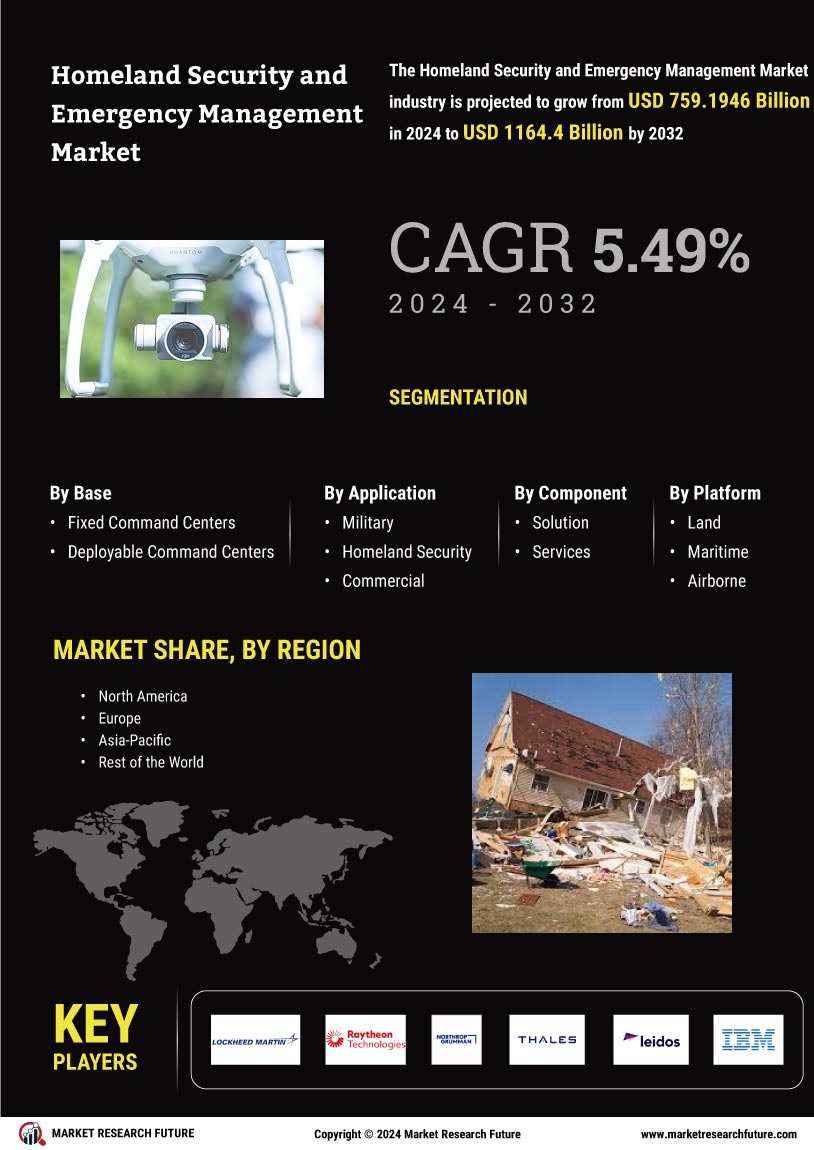Leading market players are investing heavily in research and development in order to expand their product lines, which will help the Homeland Security and Emergency Management Market, grow even more. Market participants are also undertaking a variety of strategic activities to expand their footprint, with important market developments including new product launches, contractual agreements, mergers and acquisitions, higher investments, and collaboration with other organizations. To expand and survive in a more competitive and rising market climate, Homeland Security and Emergency Management industry must offer cost-effective items.
Manufacturing locally to minimize operational costs is one of the key business tactics used by manufacturers in the Homeland Security and Emergency Management industry to benefit clients and increase the market sector. In recent years, the Homeland Security and Emergency Management industry has offered some of the most significant advantages to medicine.
Major players in the Homeland Security and Emergency Management Market, including Lockheed Martin Corporation (US), Raytheon Company (US), Northrop Grumman Corporation (US), Thales Group (France), Leidos (US), IBM (US), FLIR Systems (US), BAE Systems PLC (UK), General Dynamics Corporation (US), Elbit Systems Ltd (Israel), are attempting to increase market demand by investing in research and development operations.
The aerospace and defense industries can get technology goods and services from Raytheon Technologies Corp (Raytheon Technologies). Commercial, general aviation, and military aircraft engines, engine control systems, power generation management and distribution systems, and flight systems are all part of the company's product line. Additionally, it provides solutions for cybersecurity, electronic warfare, hypersonic, missile defense, naval warfare, land warfare, and space. The business offers aftermarket maintenance, repair, and overhaul (MRO) services in addition to fleet management services. It conducts business in the Middle East, Africa, the Americas, Europe, and Asia-Pacific.
Arlington, Virginia, in the US, is where Raytheon Technologies is headquartered.
The aerospace, defense, and security markets are served by Thales SA (Thales), which also offers smart technologies, electronic systems, software, ground transportation, services, and equipment. For the aircraft industry, it offers training solutions, flight avionics, electrical systems, electric systems, and air traffic management systems. For the ground, marine, and air defense markets, the business also offers weapon systems, protection systems, cybersecurity solutions, radio communications products, network and infrastructure systems, vital information systems, and cybersecurity solutions. Additionally, Thales provides training, maintenance, and repair services. The corporation has activities throughout the Middle East, Africa, Asia-Pacific, Europe, and the Americas.
The head office of Thales is located in Paris, Ile-de-France, France.


















Leave a Comment